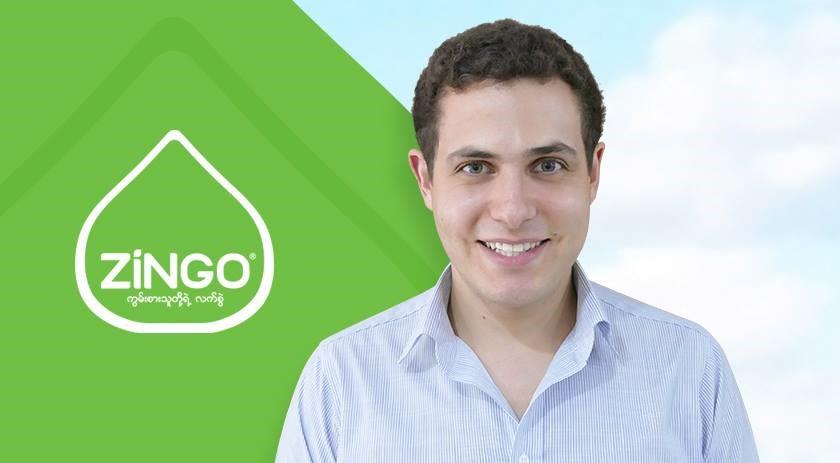
1. How did you find the idea of producing oral care product for betel nut chewers?
The first time I really began to consider the negative side effects of betel chewing was when I moved into a small apartment in an area of Hlaing Township, early on in my time in Myanmar. It was a small street, with a local market, and a betel seller right across the street. The building was owned by a father and son family who lived on the ground floor. Several times when I went downstairs, the son would stop me, point at his entirely black stained set of teeth and lament at how lonely he was because no girl would date him due to the state of his teeth.
In 2016, I found myself wanting to start a business that somehow could improve the lives of betel chewers. I did a quick online search, and realised some quite astonishing facts. Recent estimates claim there to be 600 million betel chewers across Asia. I also read about multiple short and longer term oral health issues beyond the very obvious staining, ranging from sensitivity and inflammation to oral cancer.
I visited multiple locations where taxi drivers were waiting for customers and started to ask around about some of these negative effects. To my surprise, almost all expressed concern about the state of their teeth, and a real fear of the long term side effects.
I became quite excited about my idea and with a little more searching, I came across a Danish company that stated it offered contract R&D for nutraceutical chewing gum and other oral dosage forms. We developed our first prototype working with this company and have been doing further trials and R&D in multiple locations around the world since then.
2. What is your company strategy to distribute Zingo products to individual betel nuts chewers?
We have developed an innovative distribution model whereby we distribute directly to betel vendors. This is effective because it enables betel chewers to easily buy Zingo products at the same time they purchase betel. Our products are quite appealing to betel vendors because they are easy to sell alongside betel, so that these vendors do not have to work particularly hard to sell them. We have developed a number of ways to help our betel vendors to sell more effectively, where we promote particular outlets, and offer strong materials to explain the products to the end customer.
3. What are your current products in your market?
Currently, we sell chewing gum and mouthwash. Our gum sachets retail at Ks. 300, and our mouthwash sachets retail at Ks. 100. Both are positioned and priced for daily use.
4. What are your main challenges and how do you overcome?
We are selling very affordable/low-cost products, and so we need to sell a huge volume of them. This means that we are always attempting to build our team and expand our number of outlets. We are also facing the awareness gap, whereby many/most betel vendors and customers are not yet aware of our
brand. This is becoming less of a challenge each day as our brand awareness is grows.
5. You have raised US$350,000 from international investors, have you met any difficulties to reach that amount?
It was not difficult to raise funds. We have a strong business model that is targeting a very well recognised problem in Myanmar, and our investors recognized this.
6. Where do you see your business in the next following years?
There are 600 million betel chewers across Asia. We want to be their oral care brand of choice. In order to achieve this, we need to offer the most effective, targeted and affordable products to our customers, and always prioritise their needs.
7. Other than profit, what is your key targets to sustain your business in Myanmar?
We firmly believe in the potential of our business to improve the quality and life and oral health of millions of betel chewers. We also have multiple collaborations with impact partners including Myanmar dentists, and academics across the world. For example, we are conducting significant work with our partner from the University of Florida, Professor Roger Papke and recently conducted a large-scale market study to understand the habits of betel chewers. These results will are being used for a presentation at the Society for Research on Nicotine and Tobacco (SRNT) Annual Meeting in San Francisco.
8. Finally, what advice would you give to young entrepreneurs since you are the winner of innovation award?
If you want to introduce a new product or innovation, it is tempting to focus first on the innovation itself without considering the commercialisation part. My advice to entrepreneurs wanting to launch new products/innovations, particularly in low-income markets, is to first figure out what a commercialised product should look like, and then work out how to achieve this from both a cost and innovation perspective. Often you will find that the commercialisation part is far more complex than the innovation part! It’s really demoralising to develop an amazing product only to realise that no one can manufacture it at a cost that is feasible.
When we started, we had a target cost of goods, but made a mistake because we developed our product without figuring out who could manufacture it at such a low price. We assumed that chewing gum would be really cheap to manufacture, and there would be endless chewing gum manufacturers waiting to make our product. As it turned out, functional gum is rather expensive to manufacture, and we ended up having to redesign our products, based on our eventual manufacturer’s ability to match our target costs. While we got to the end result we were targeting, we incurred additional costs and unnecessary
delays.












